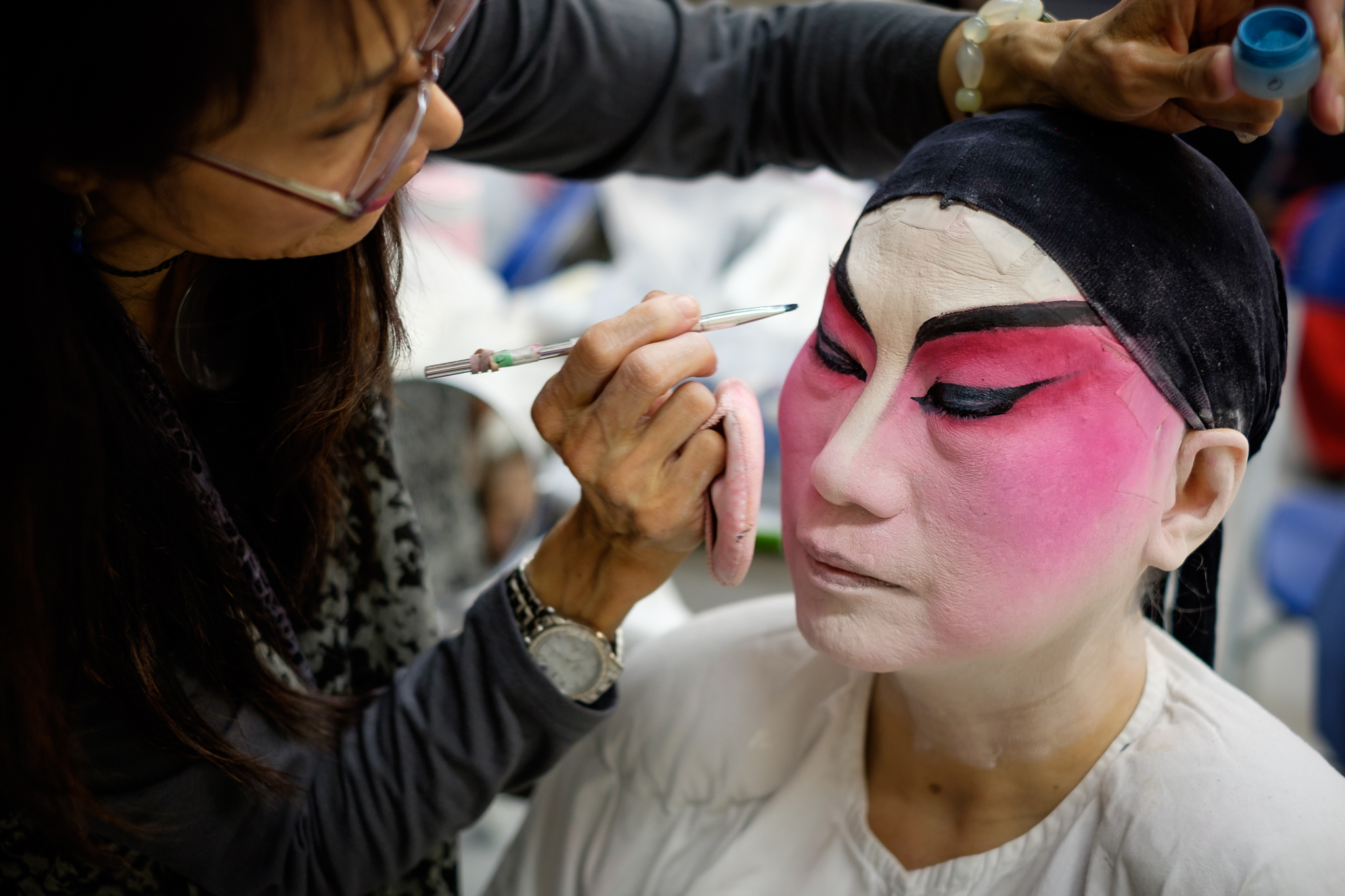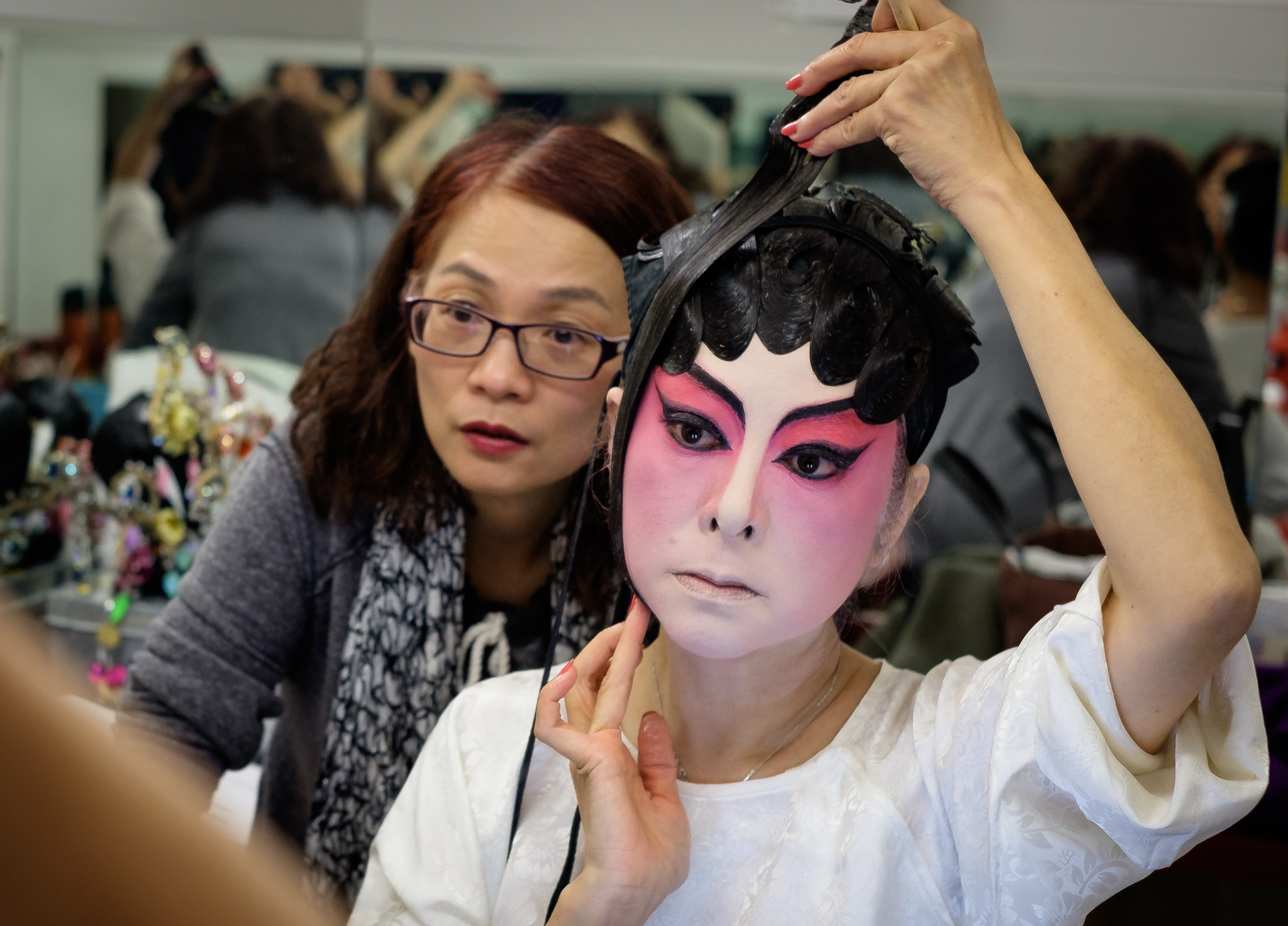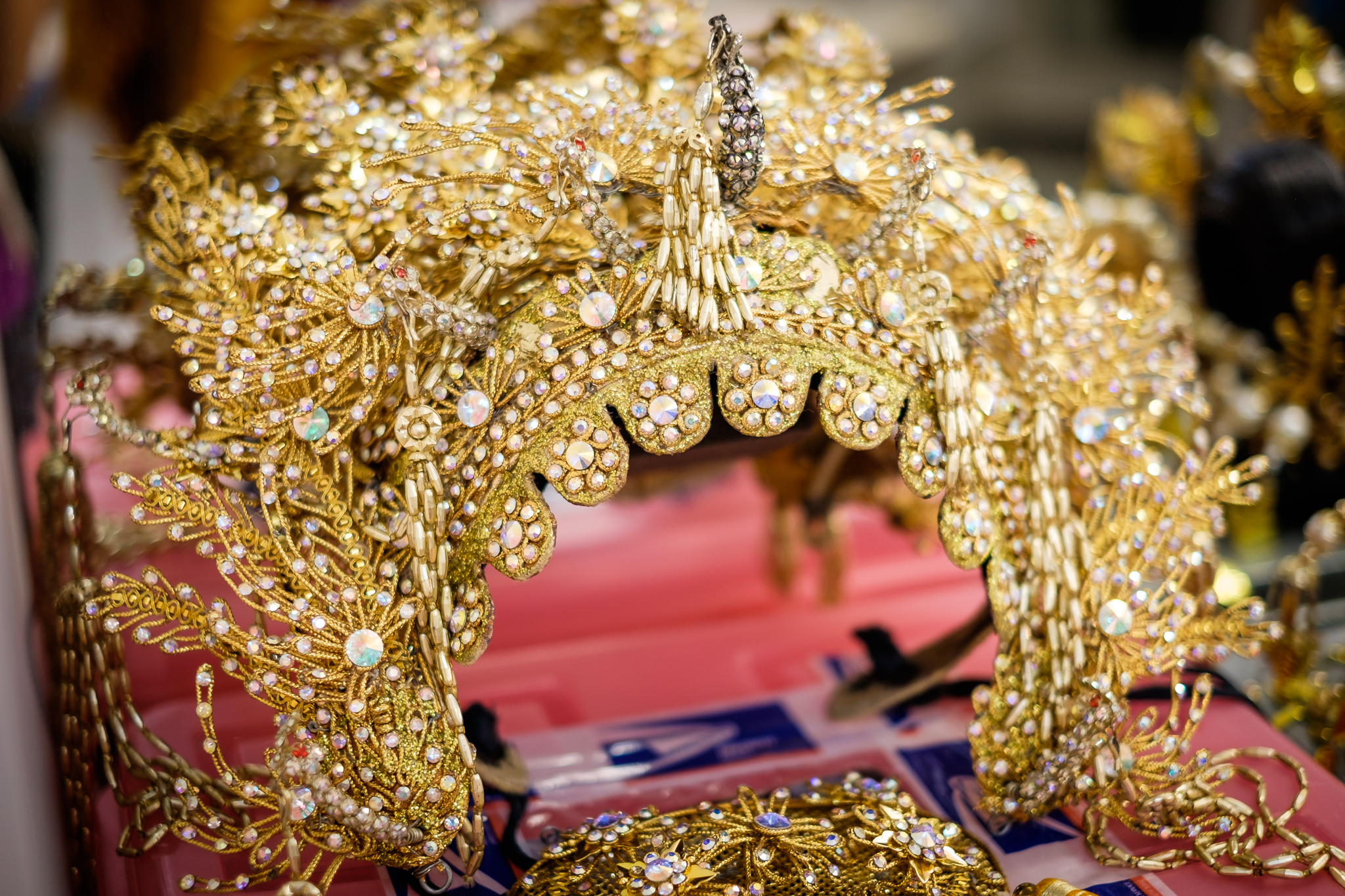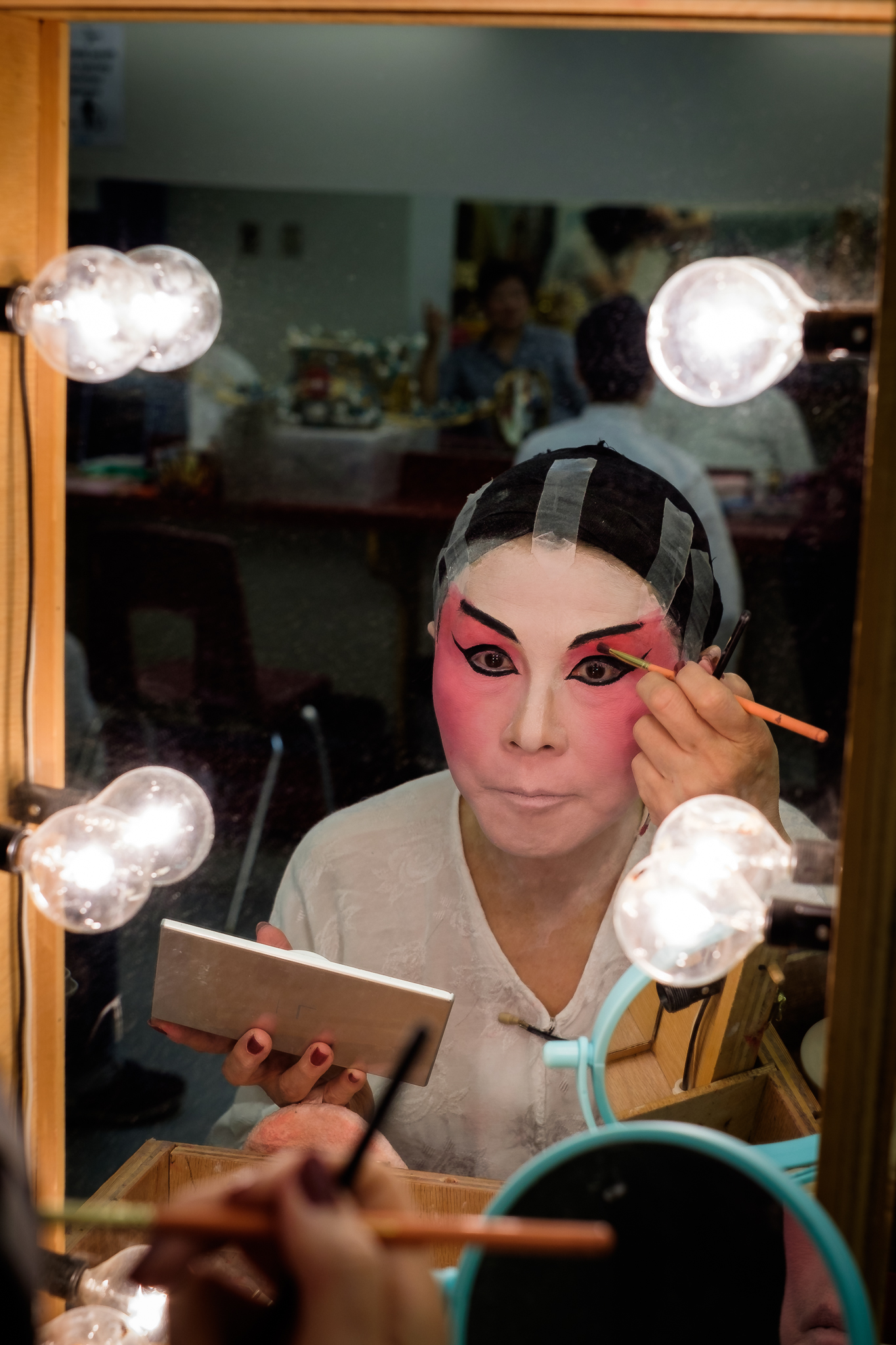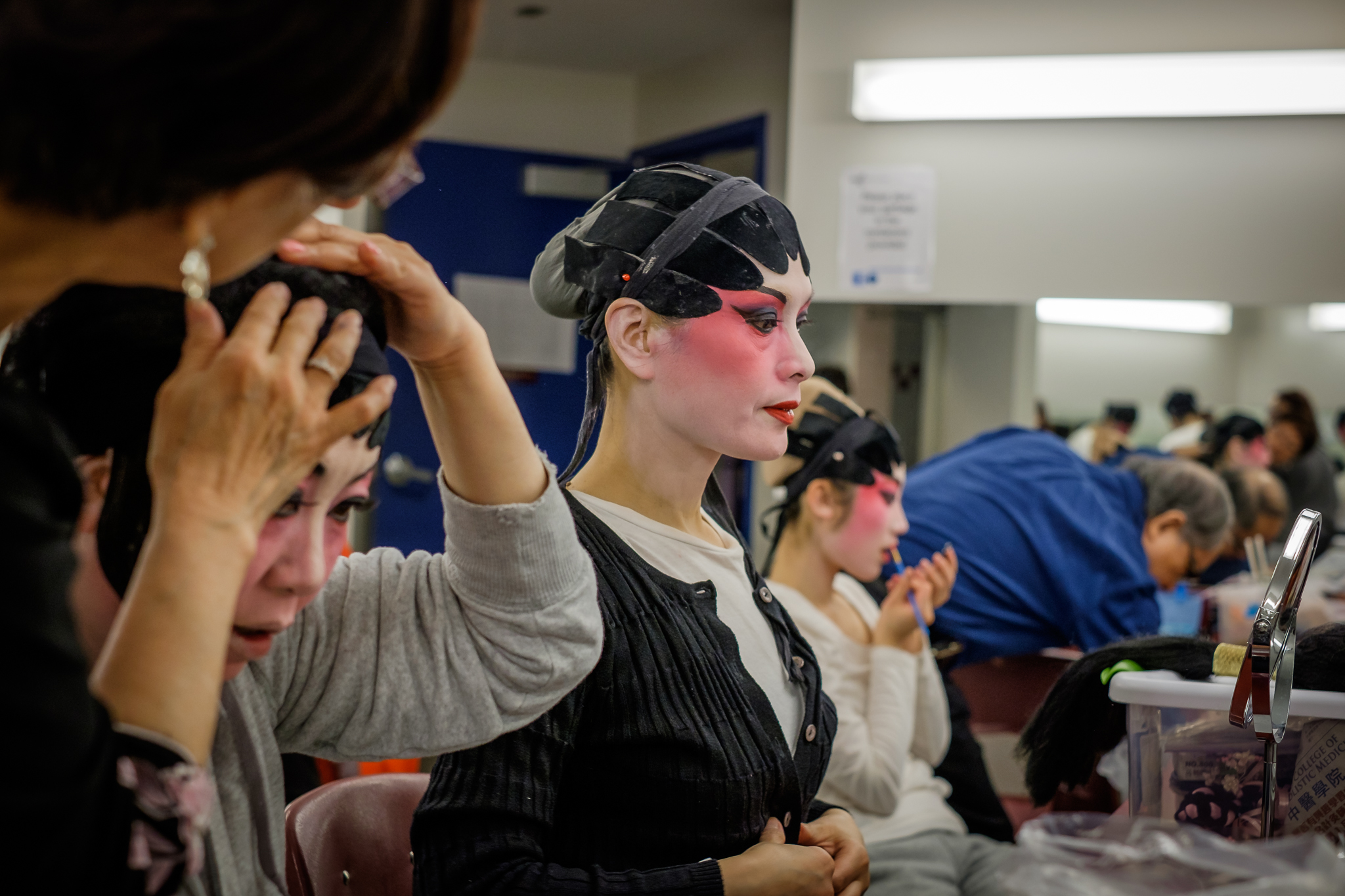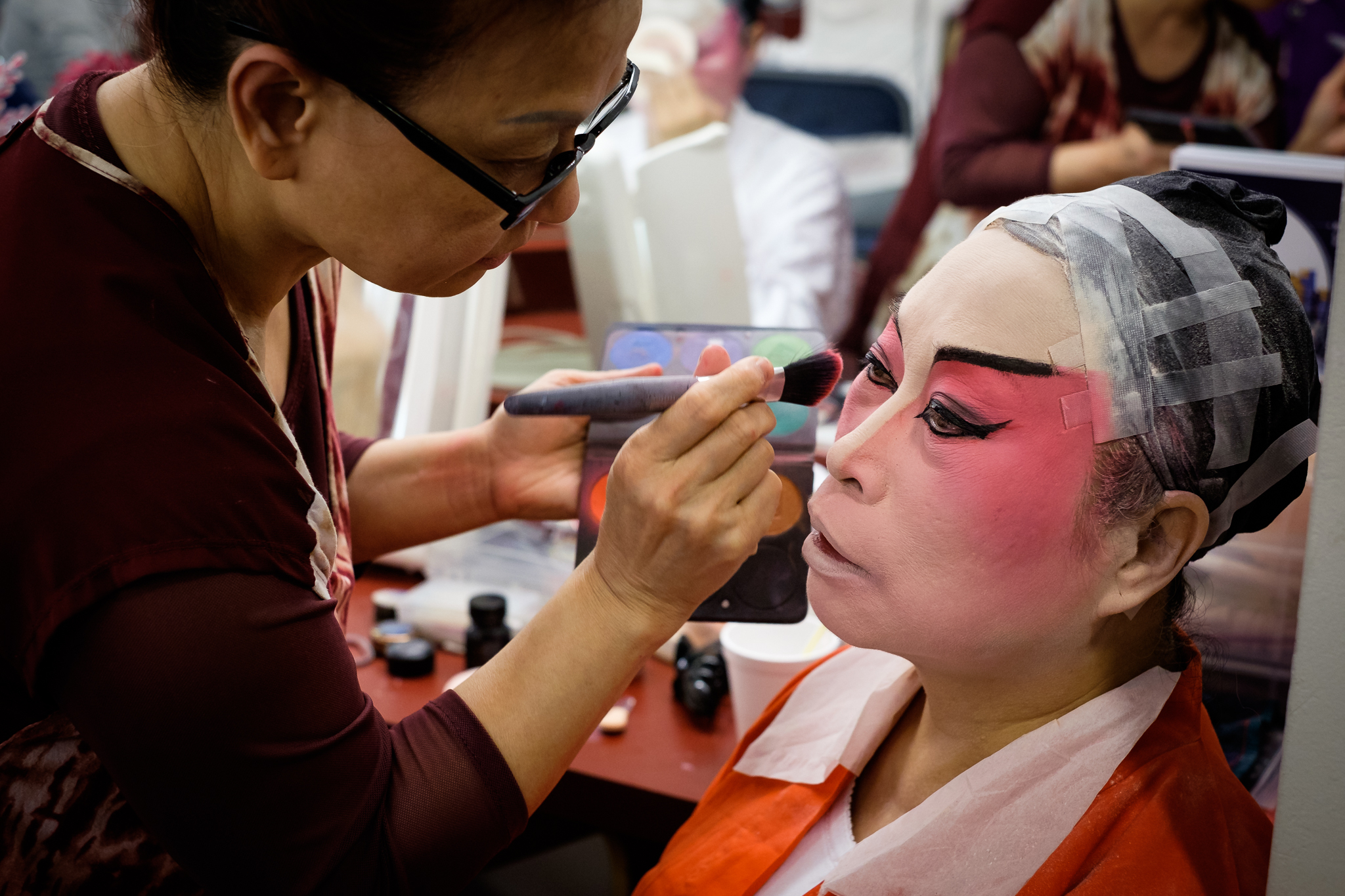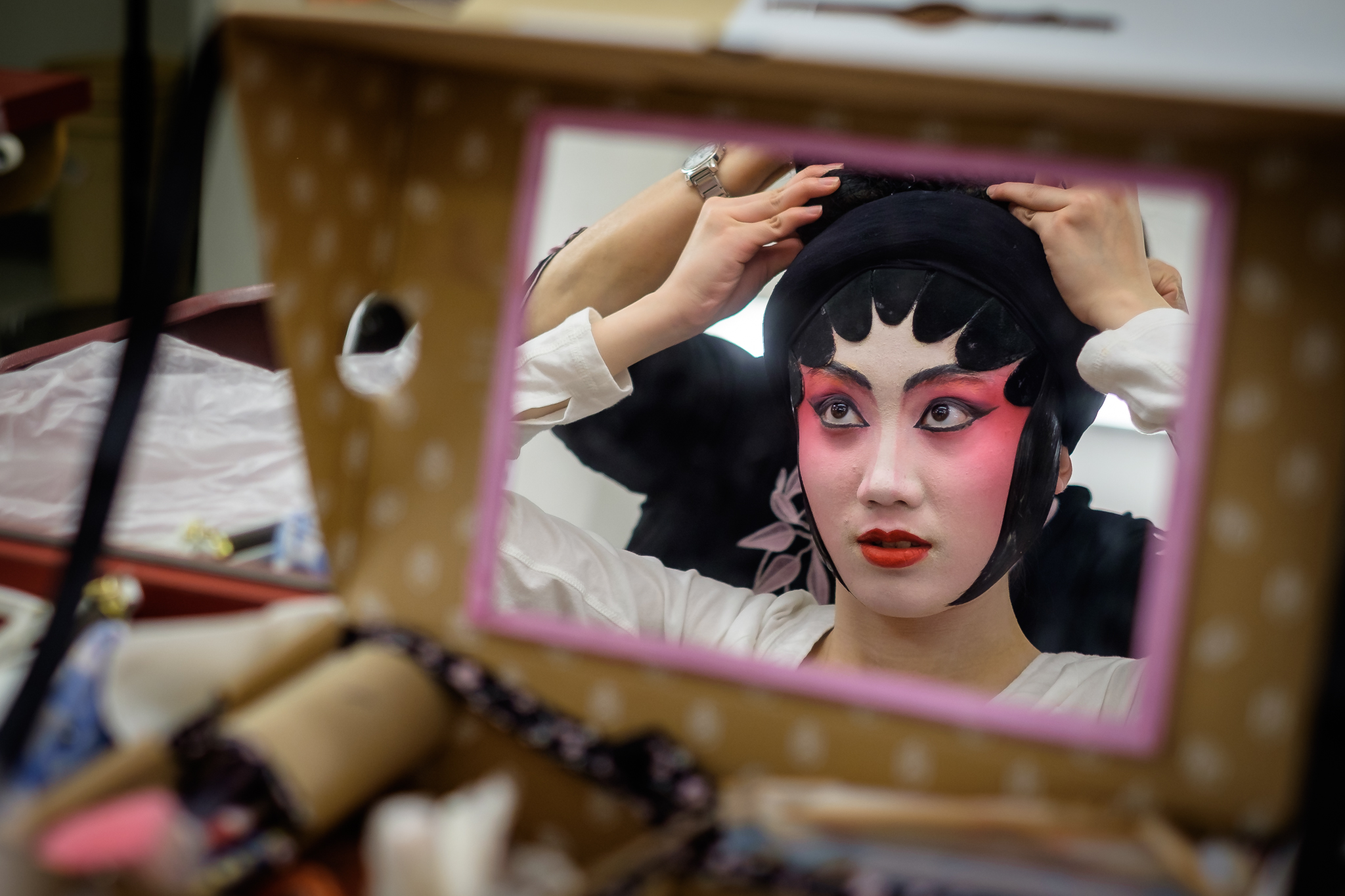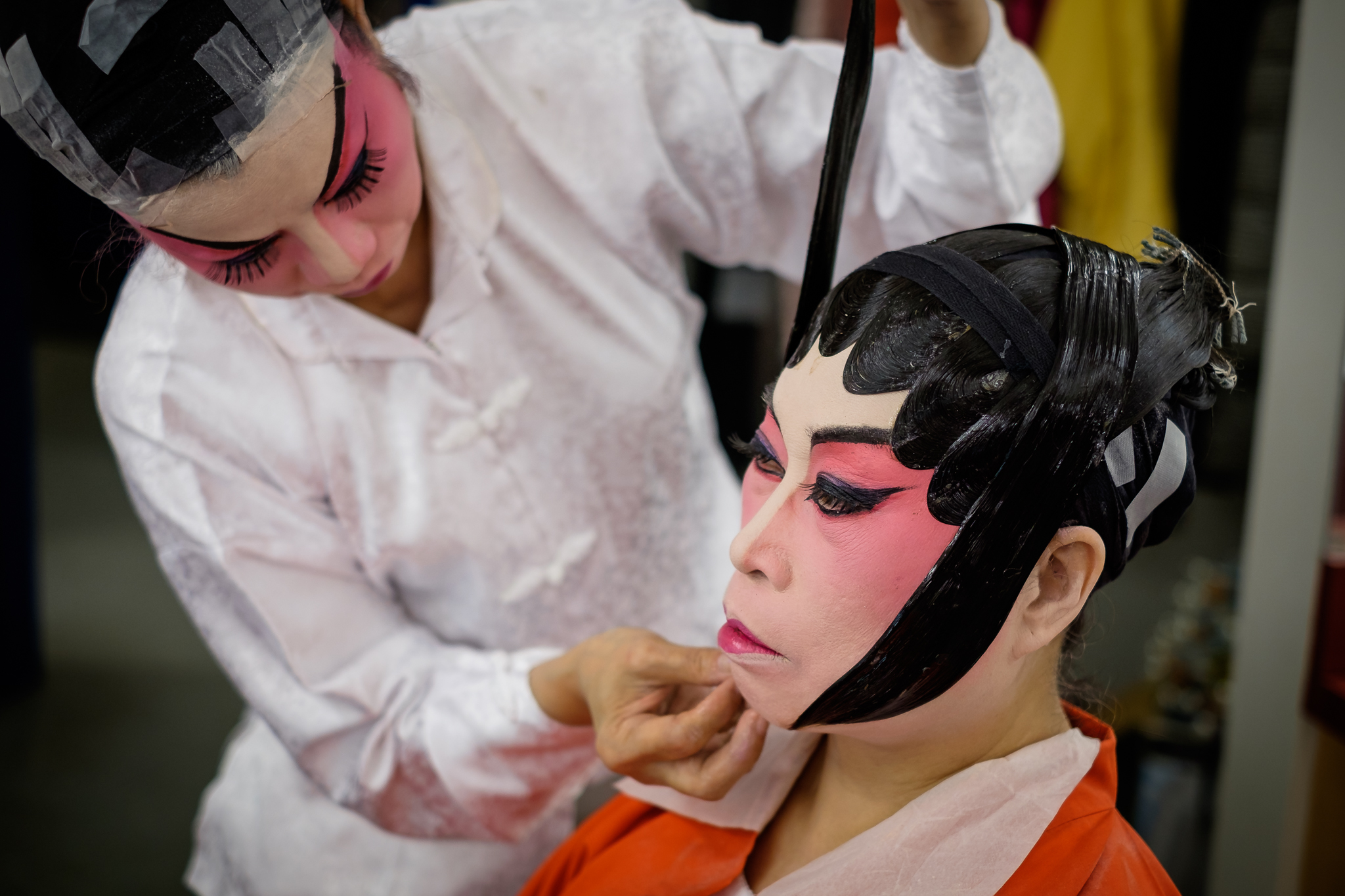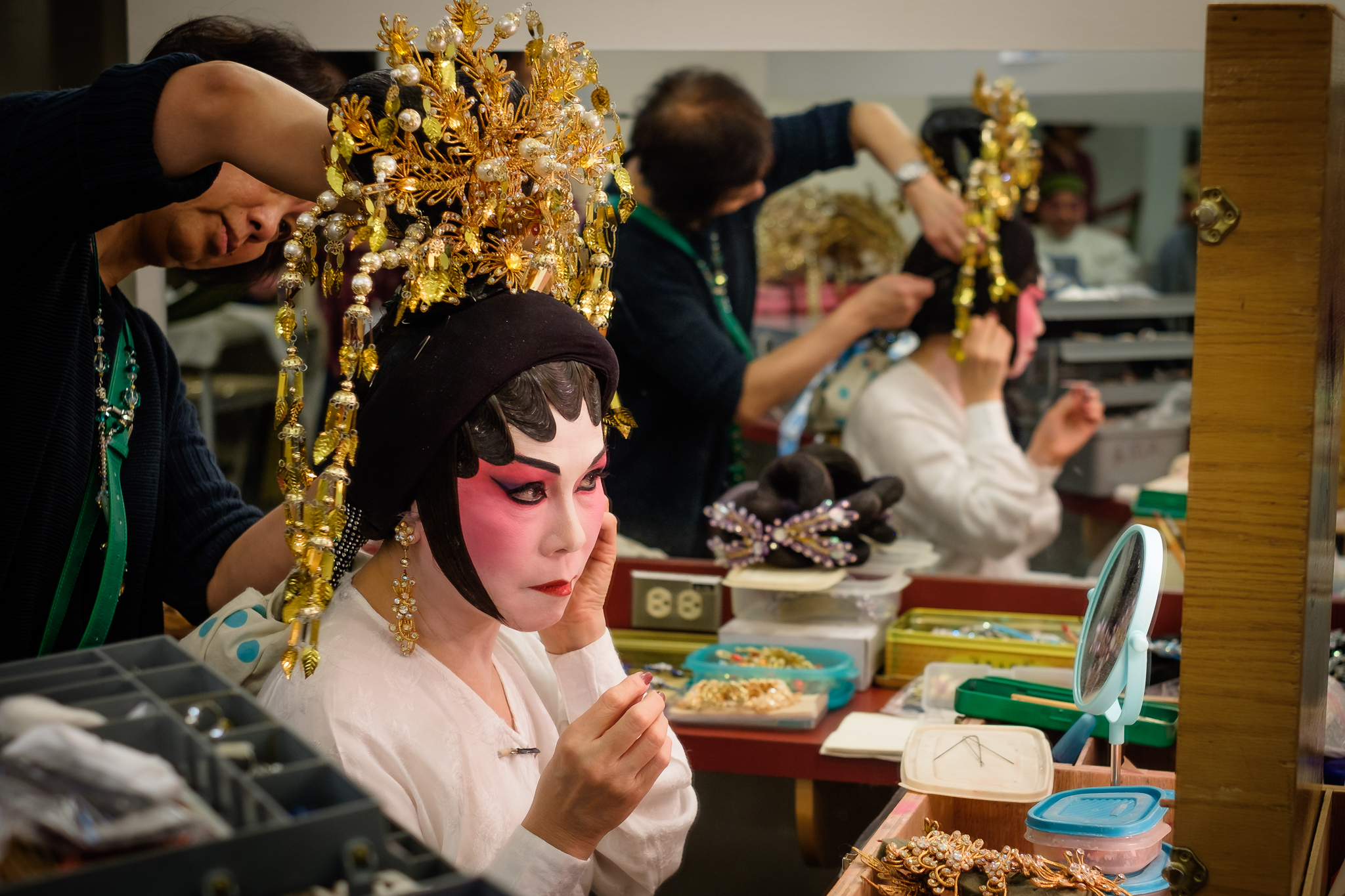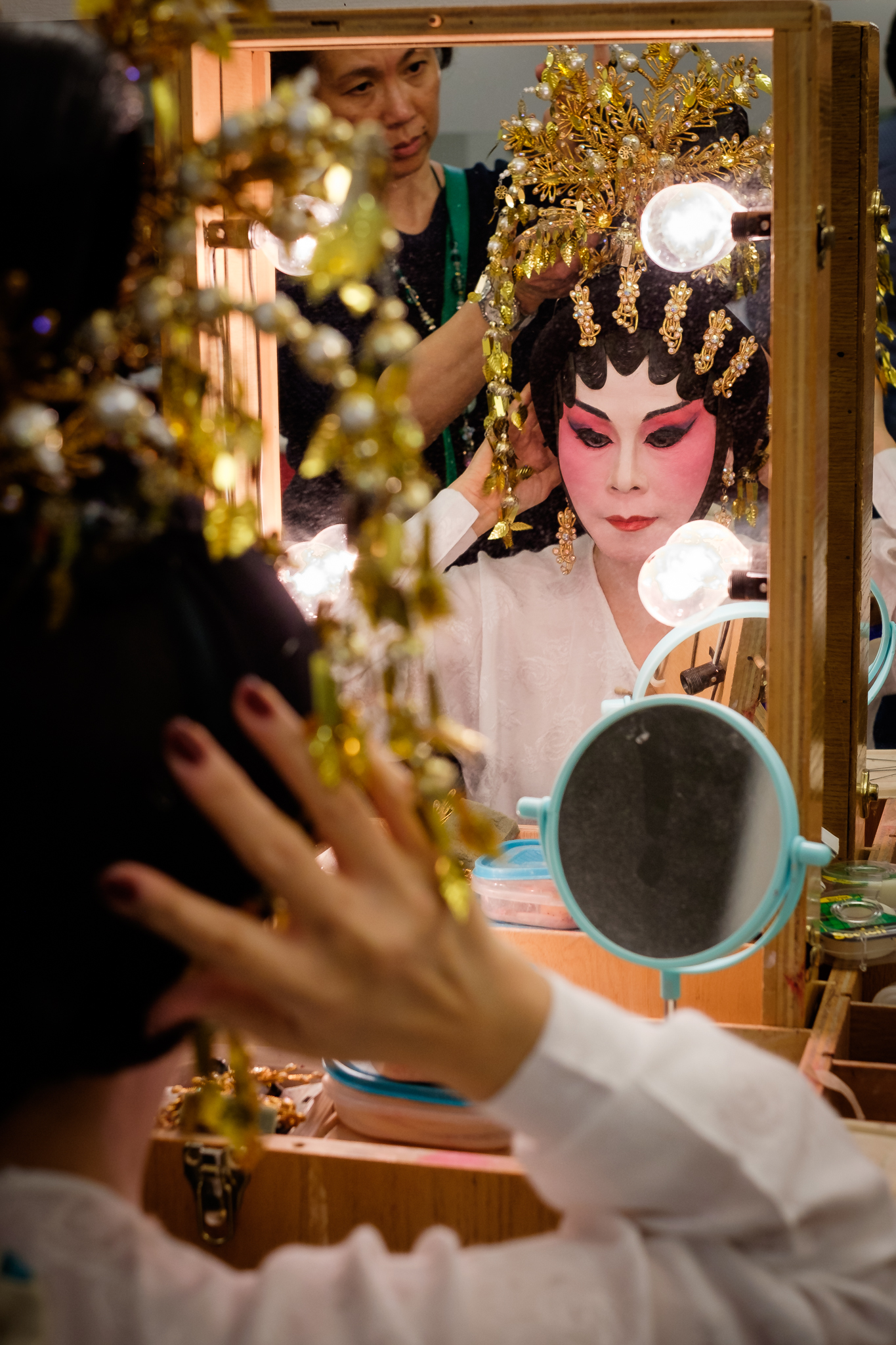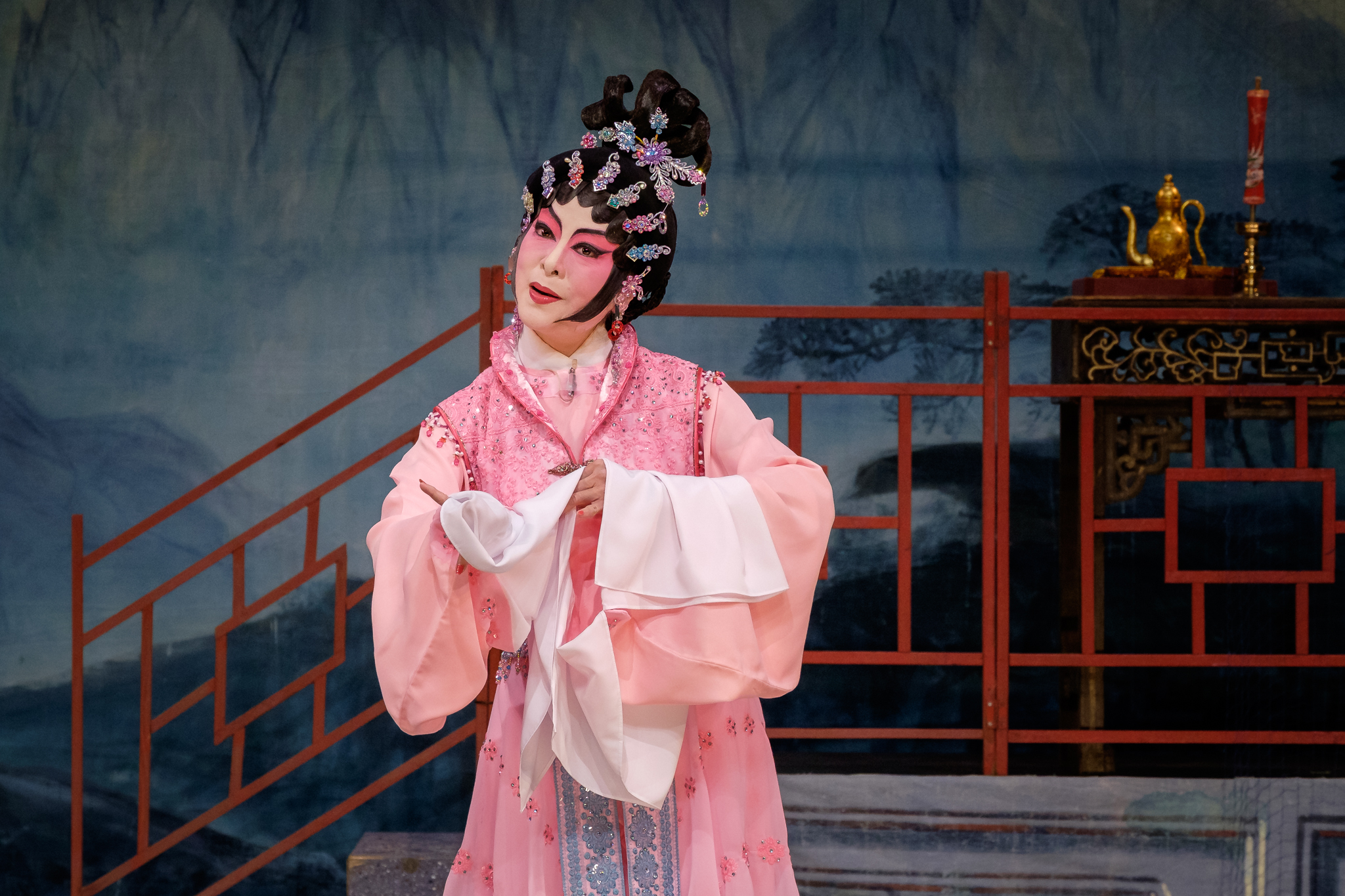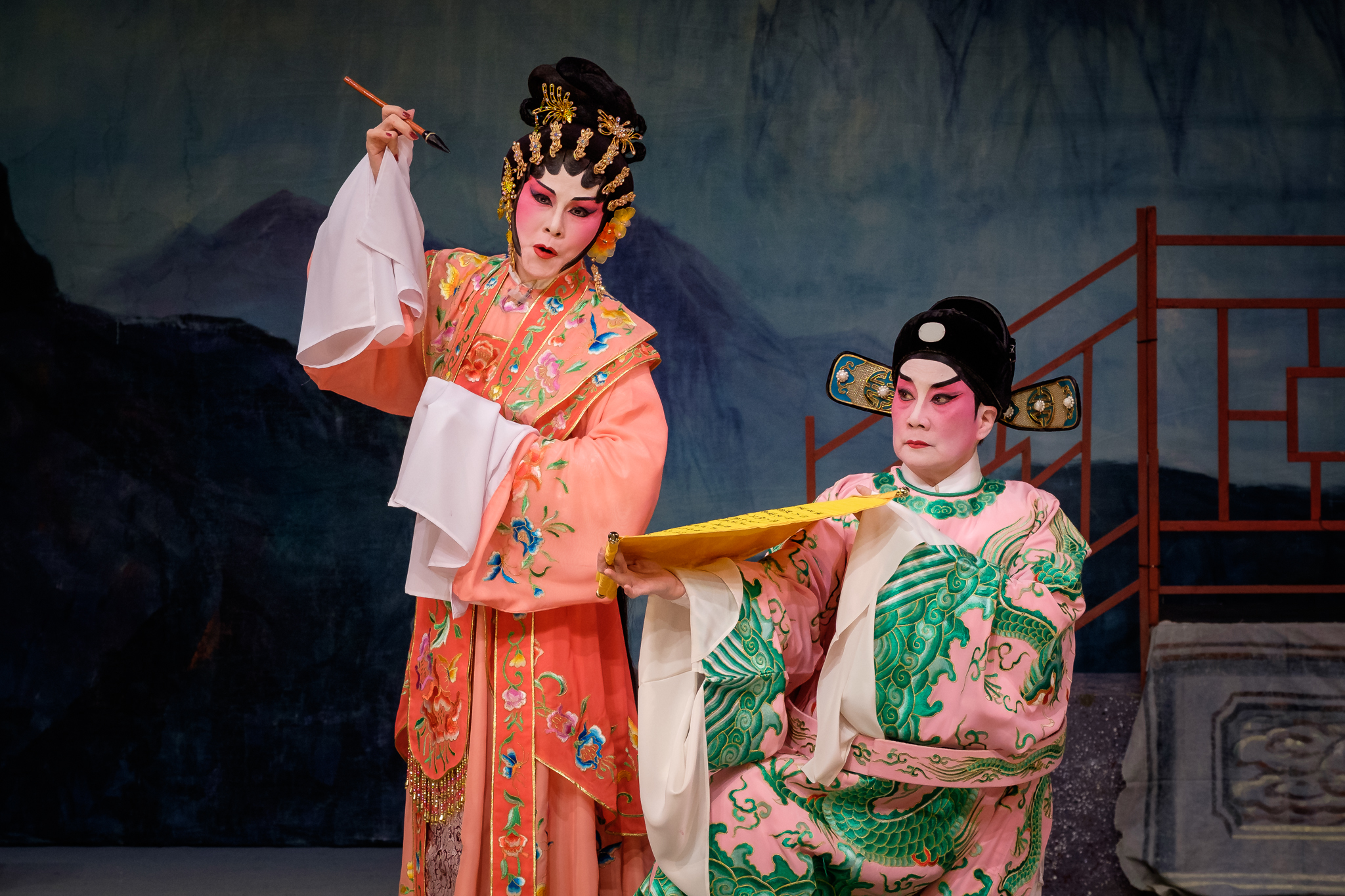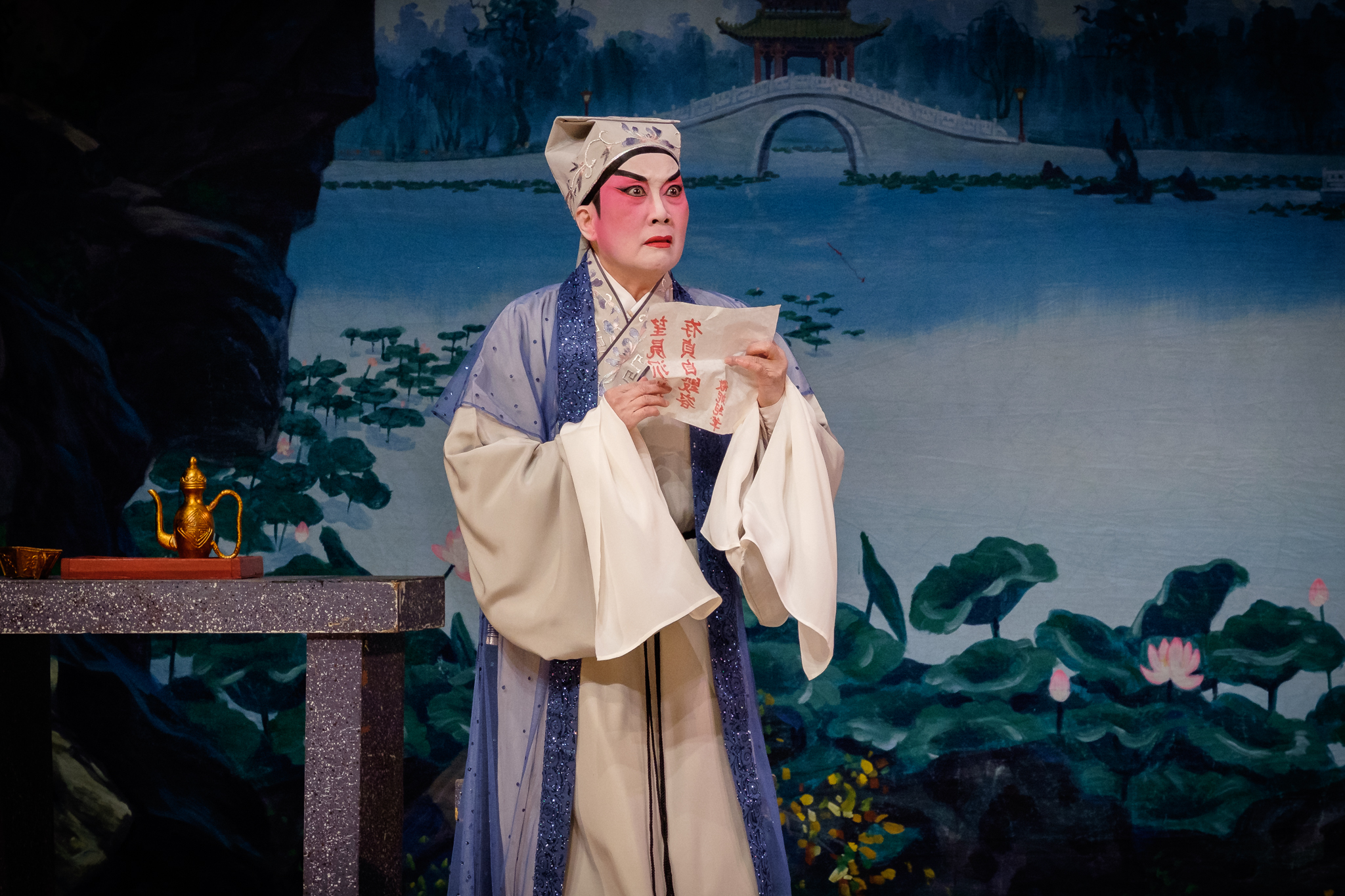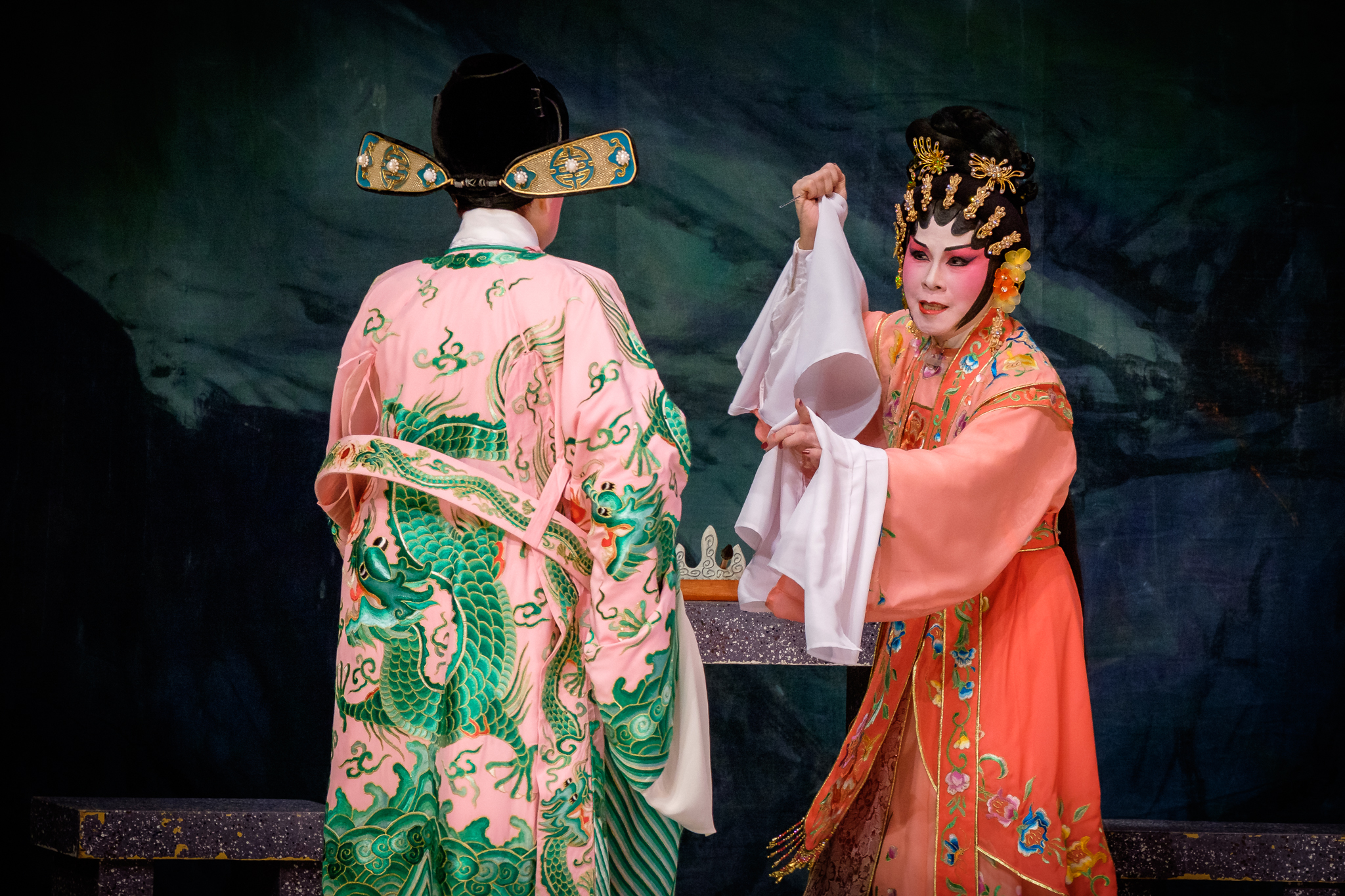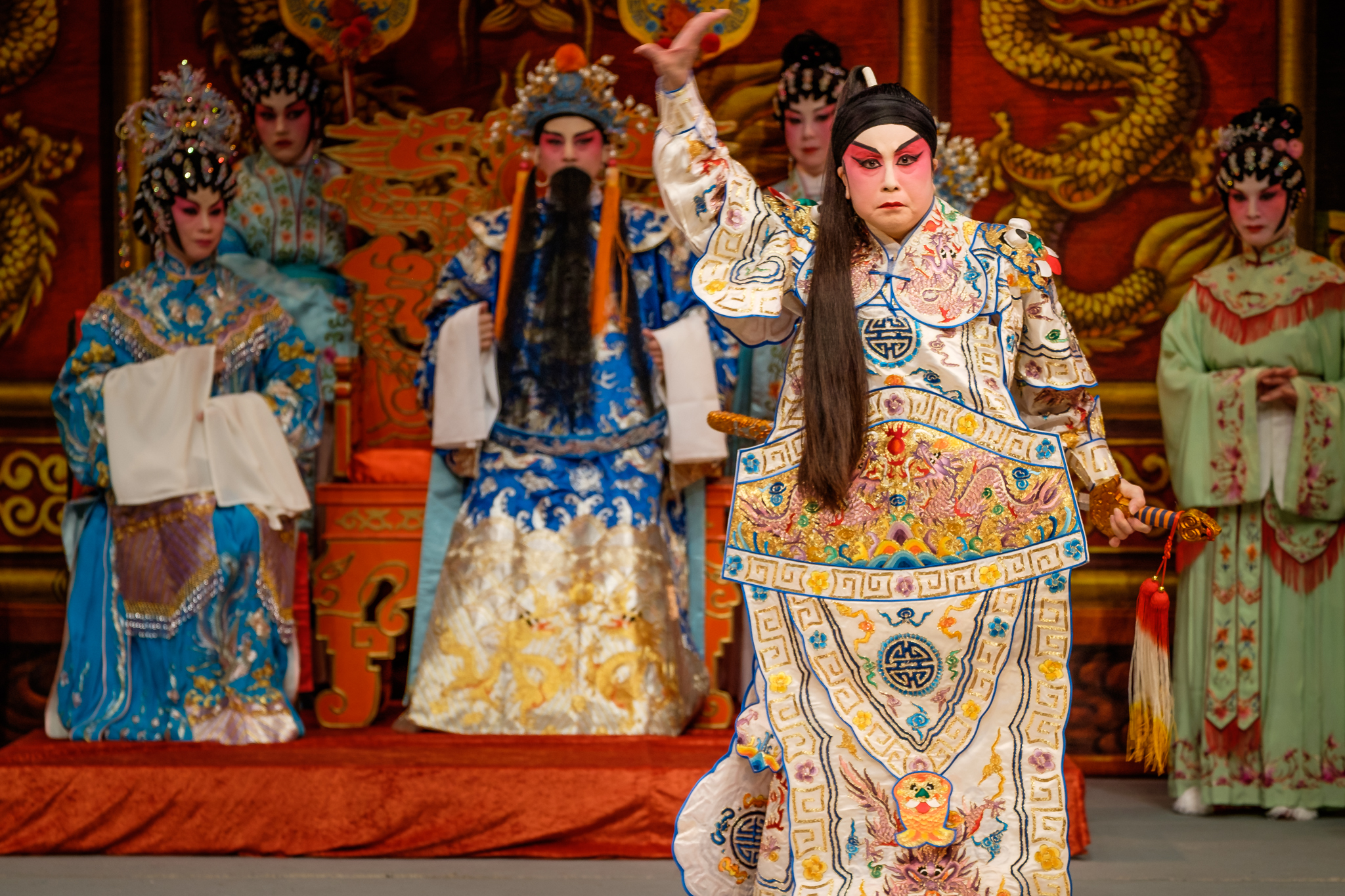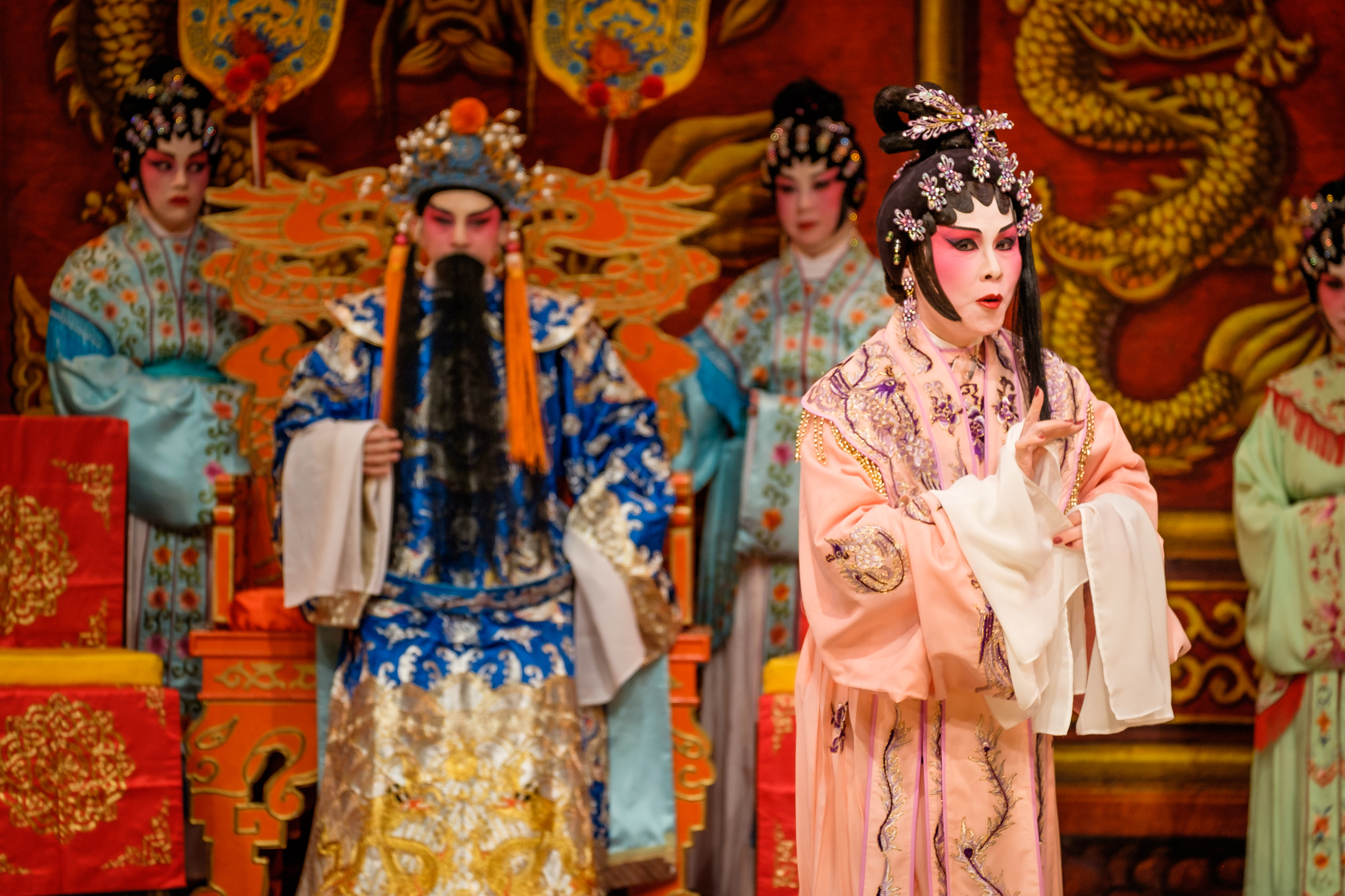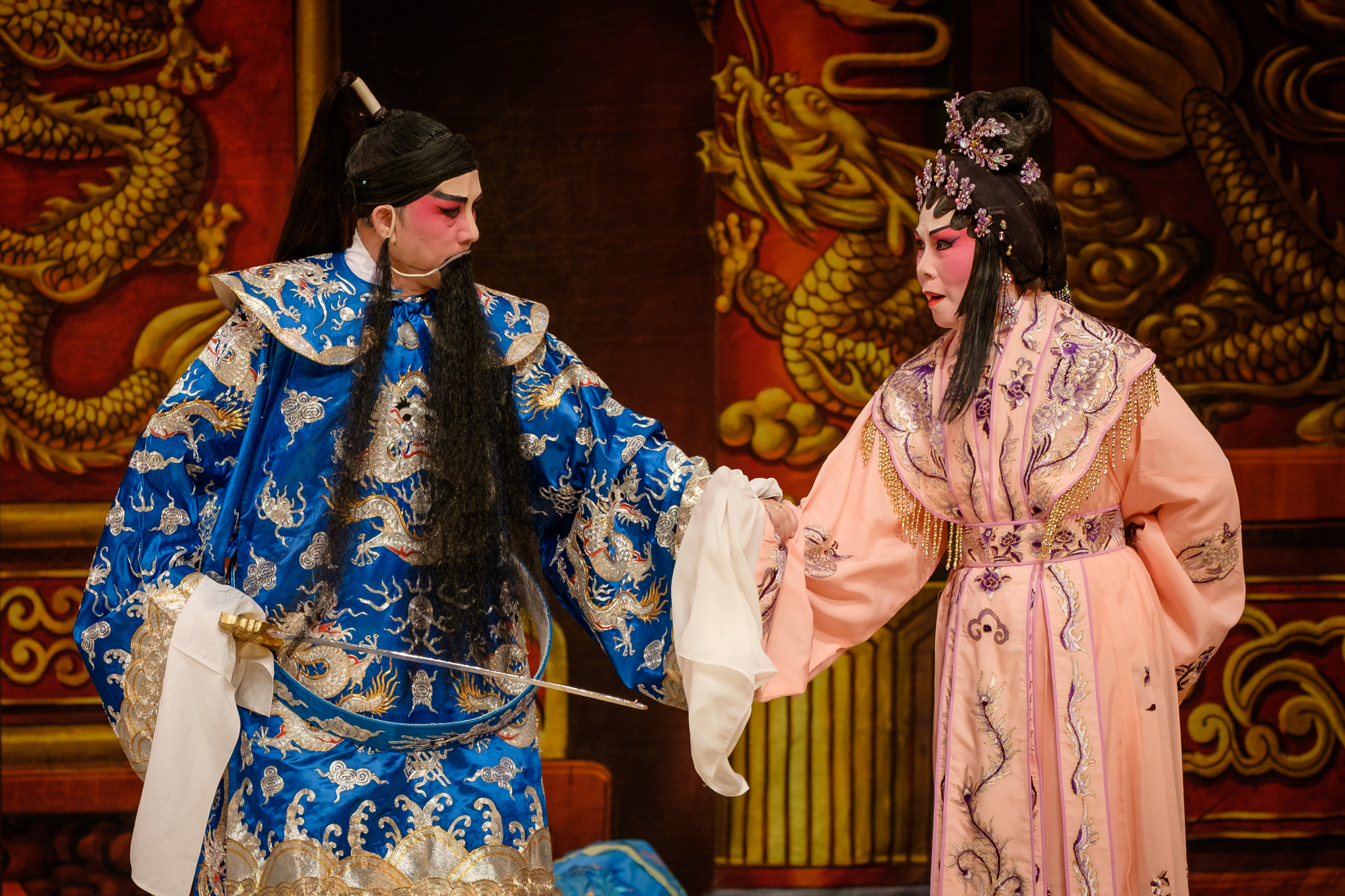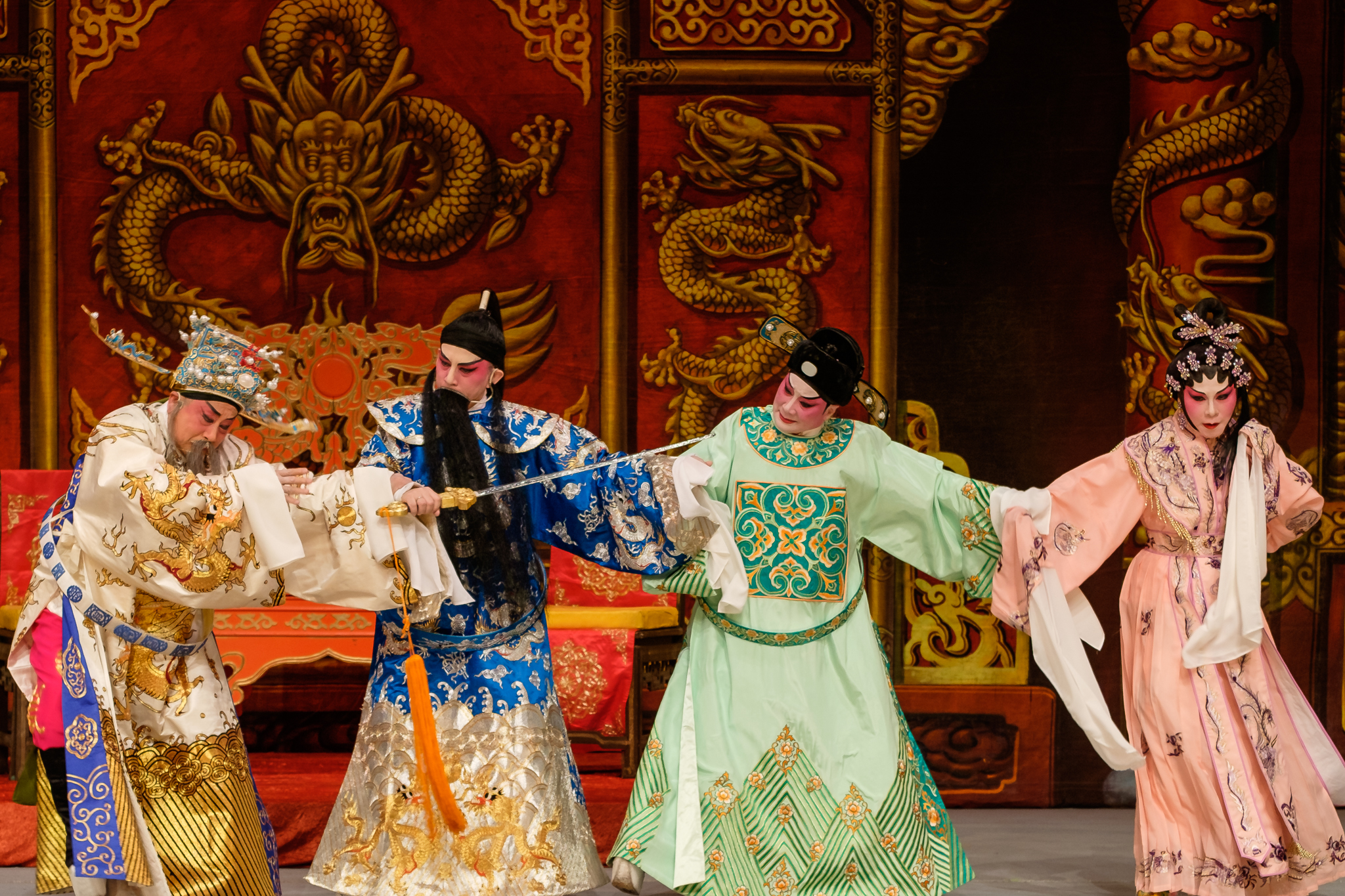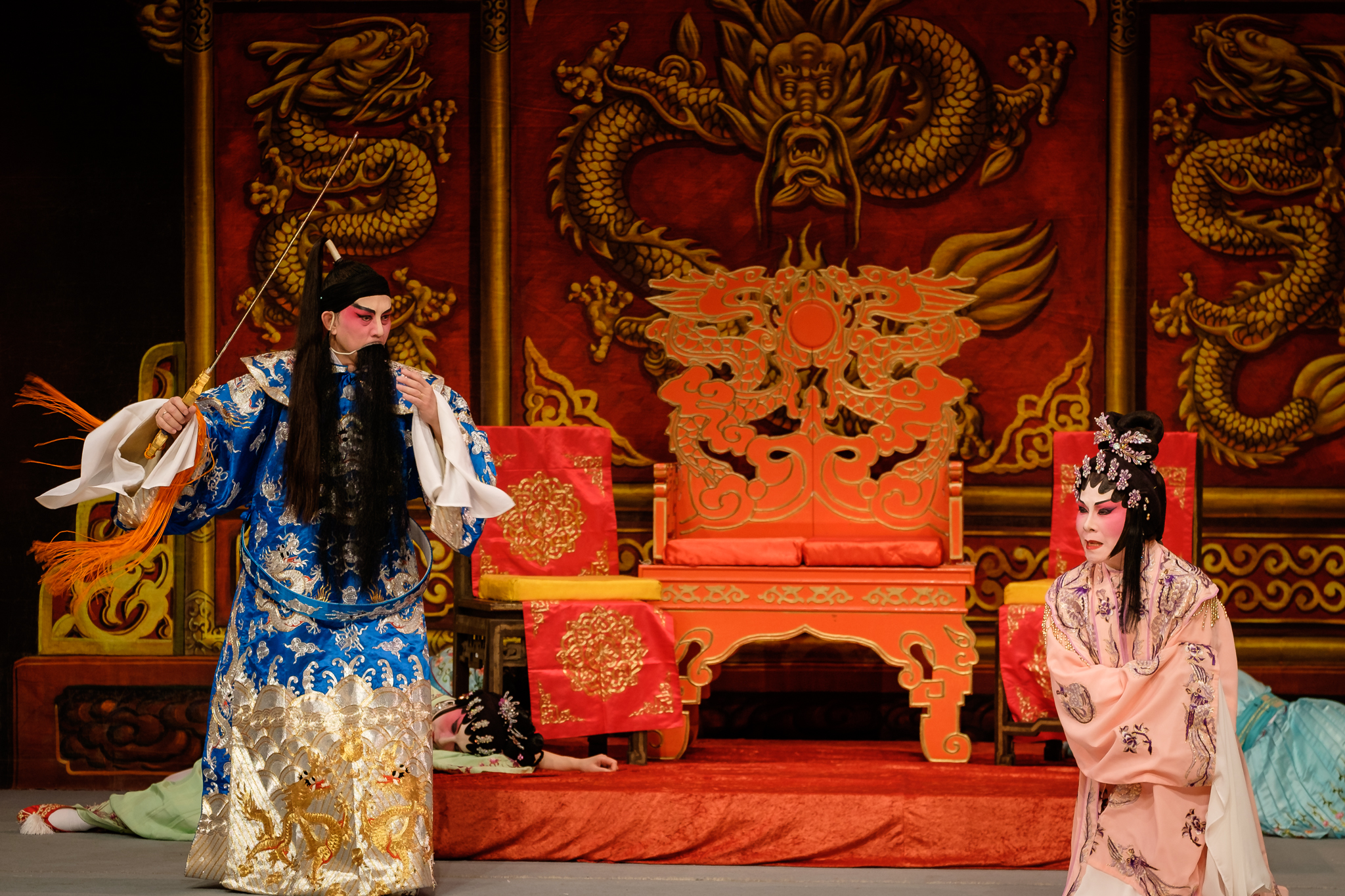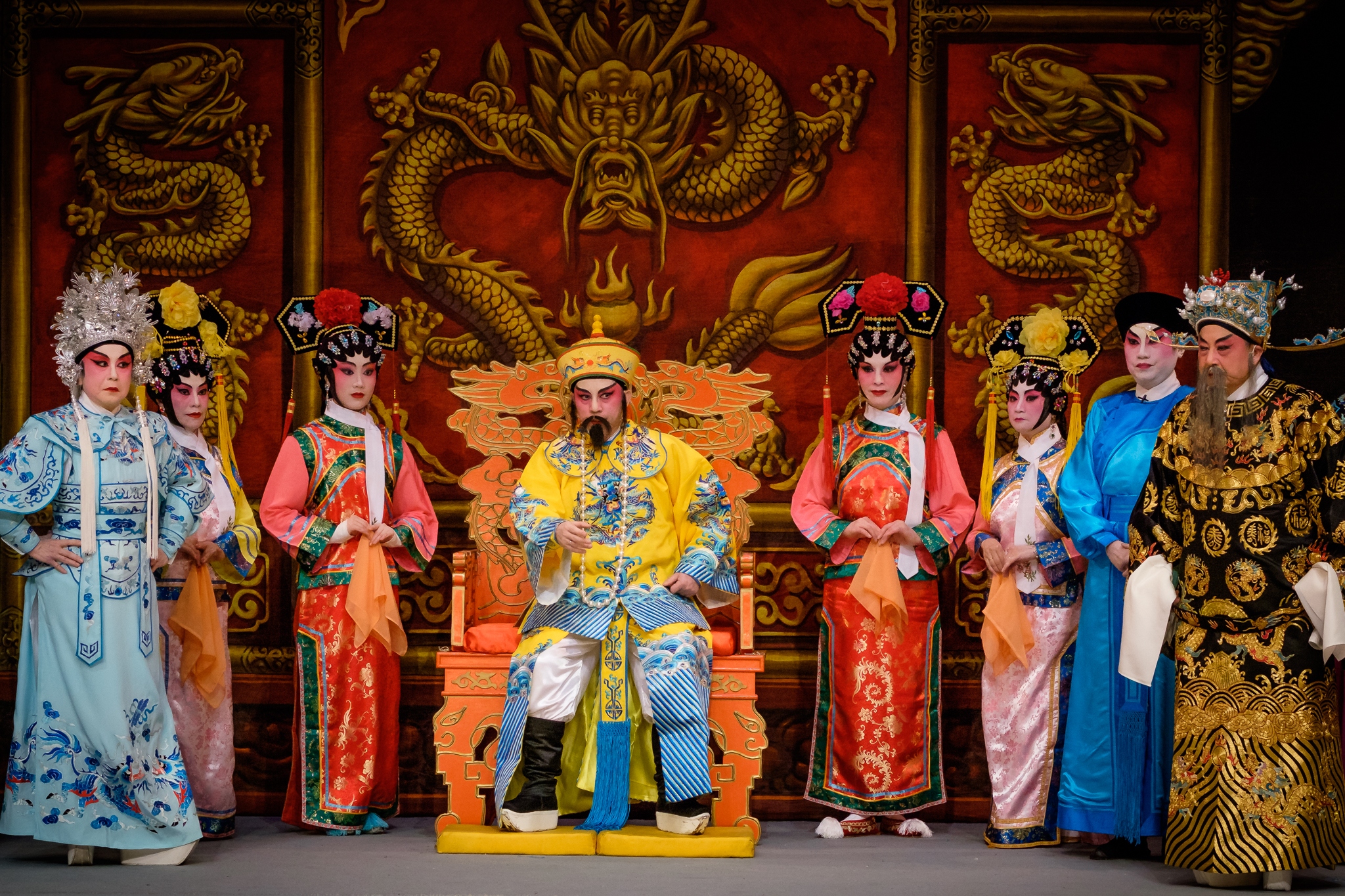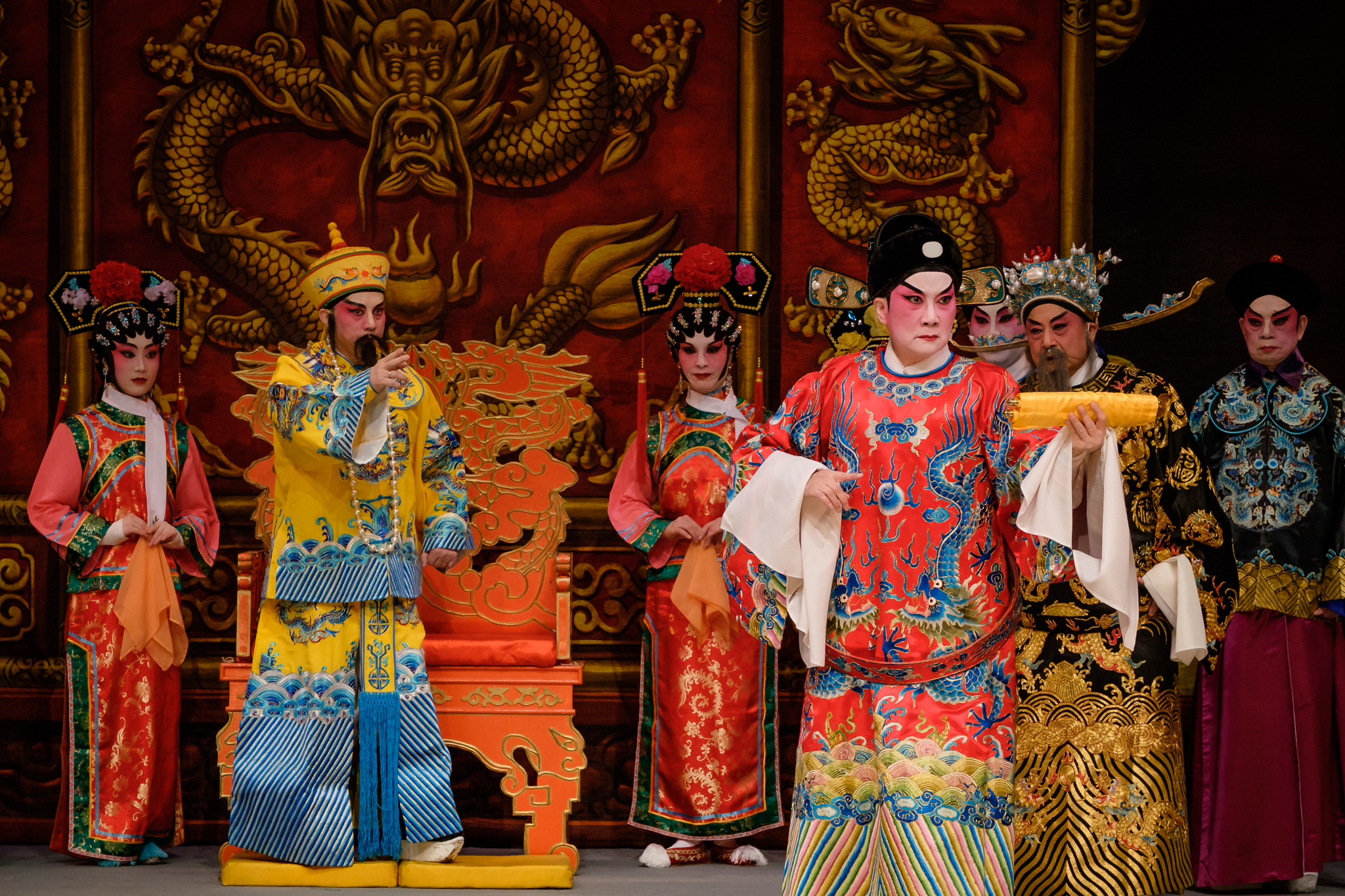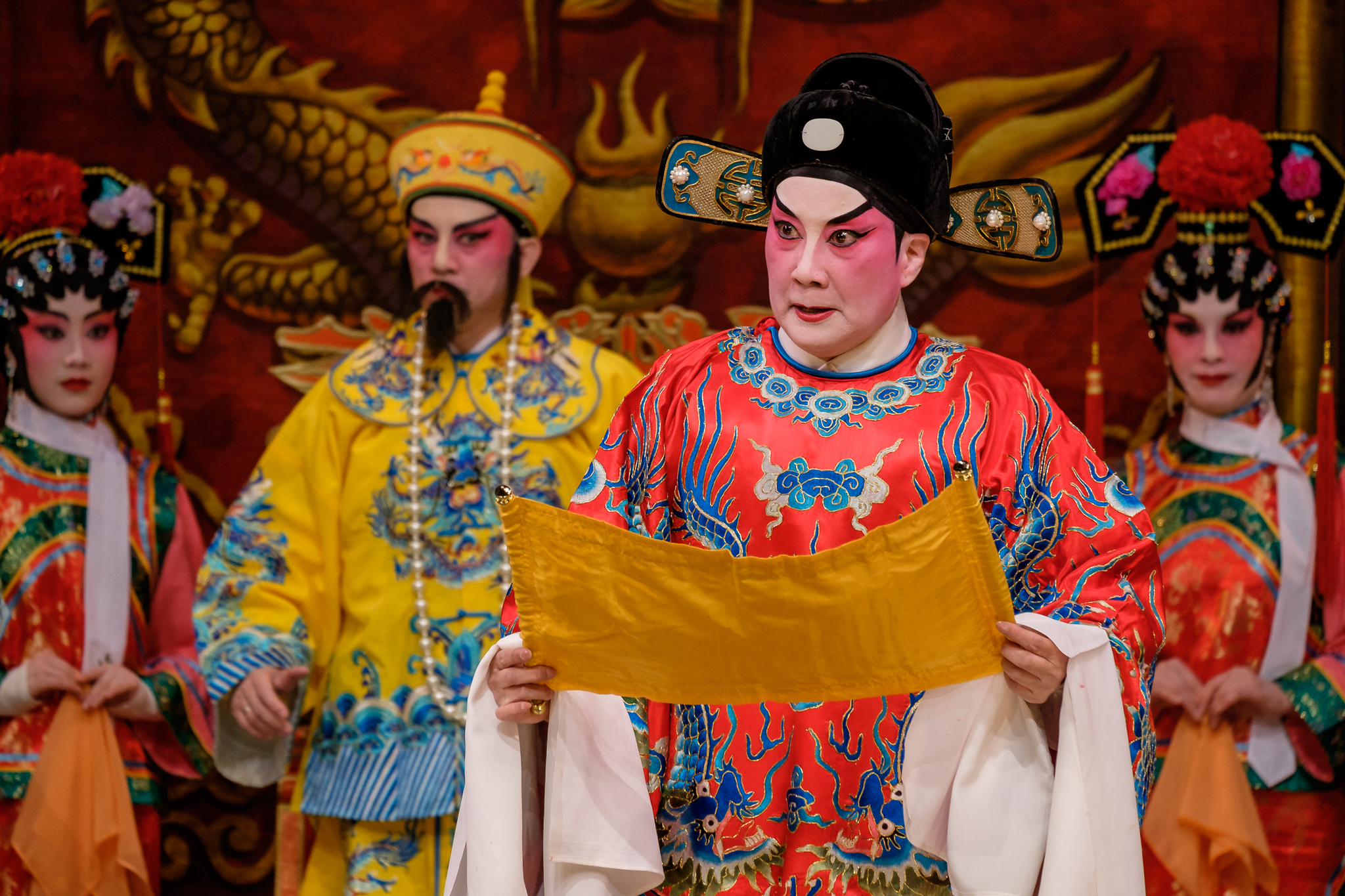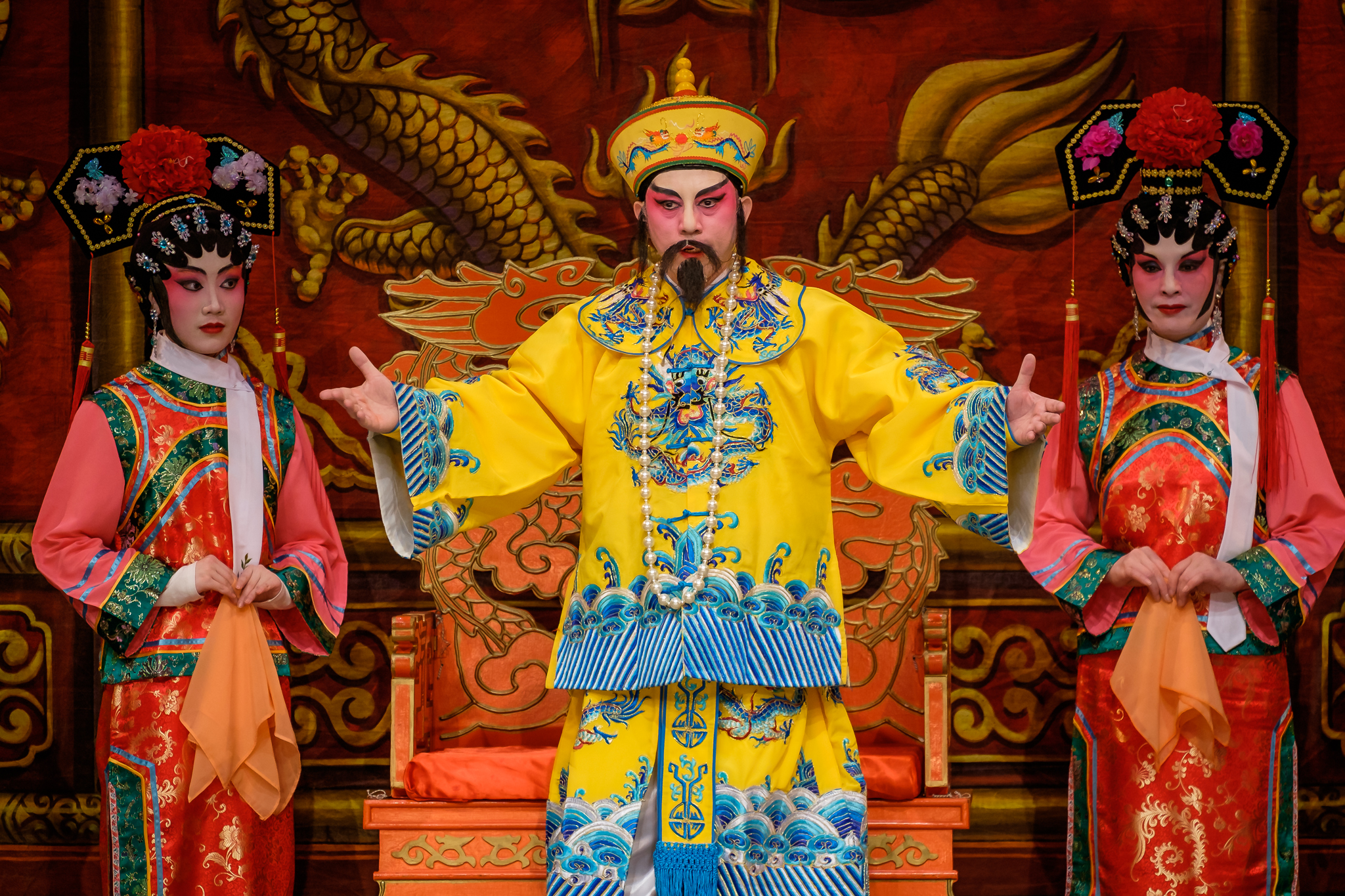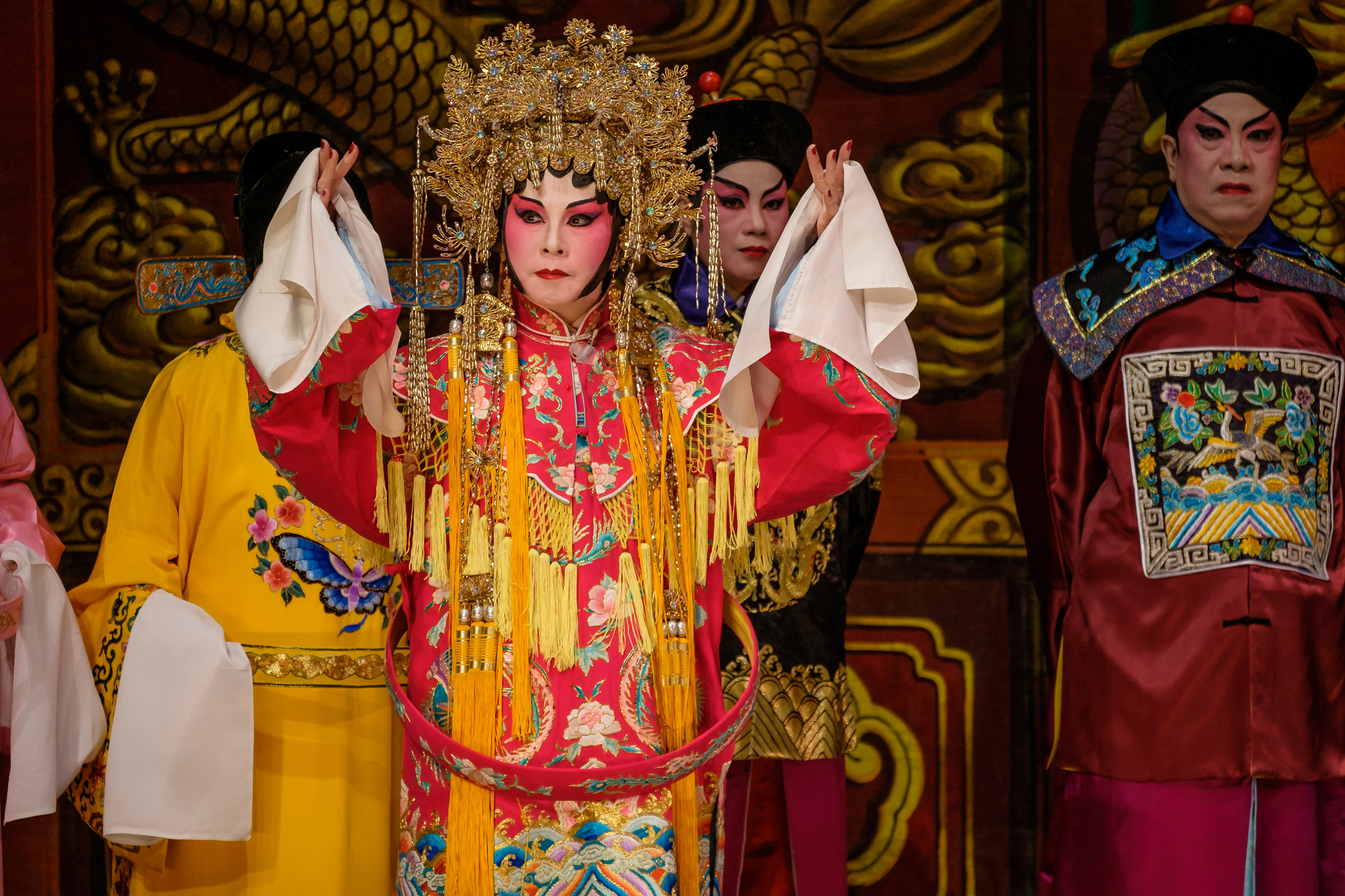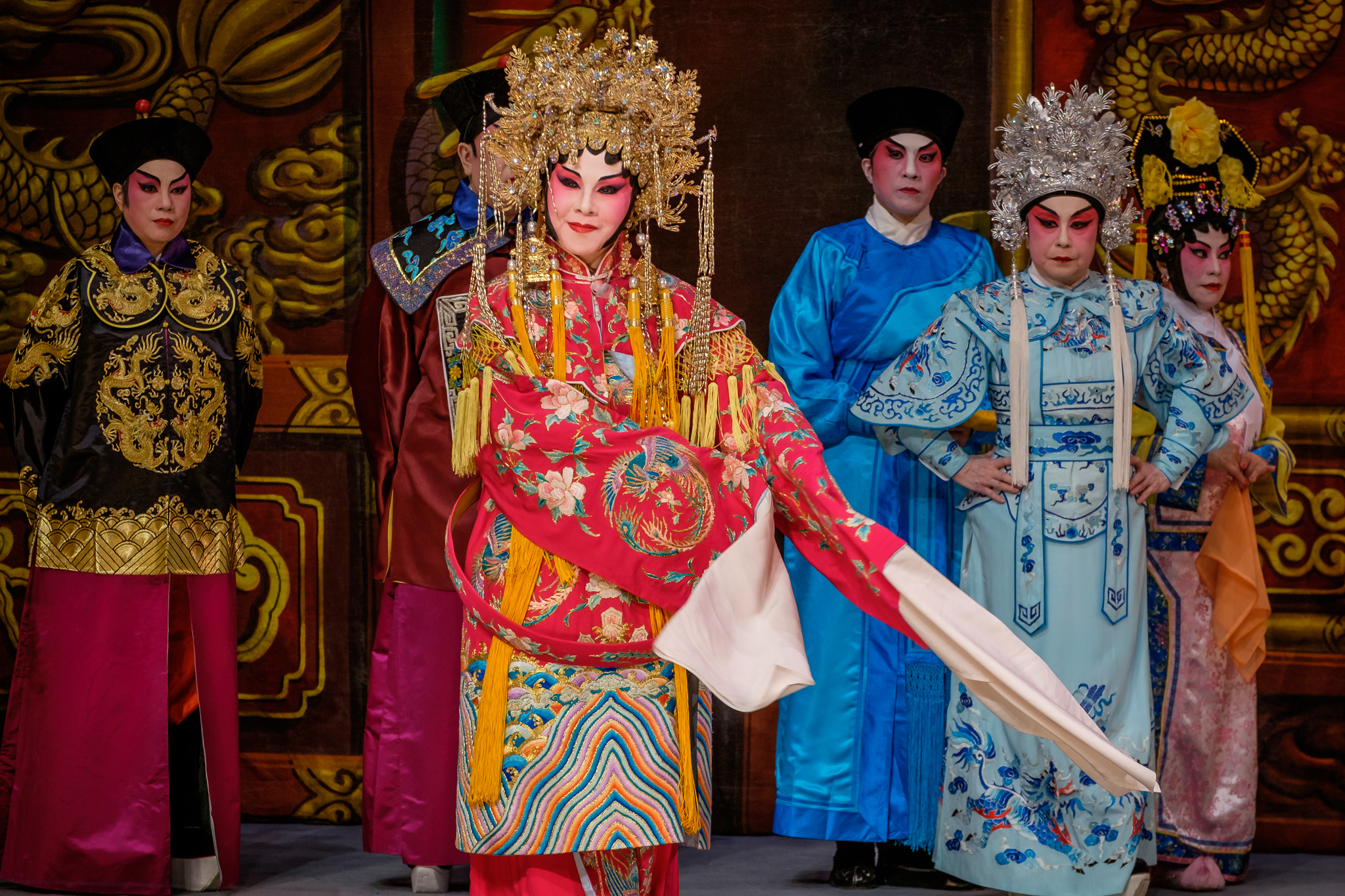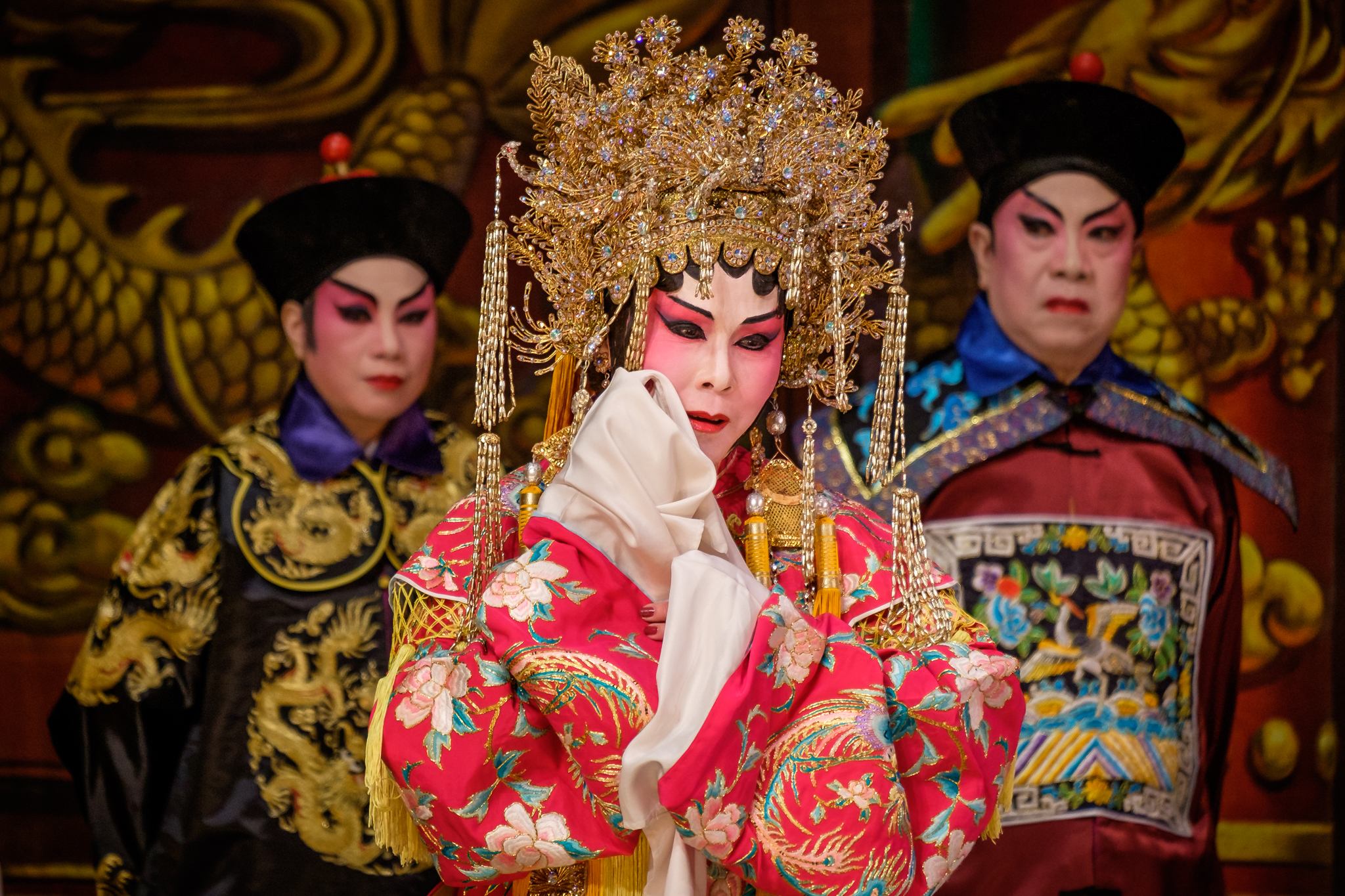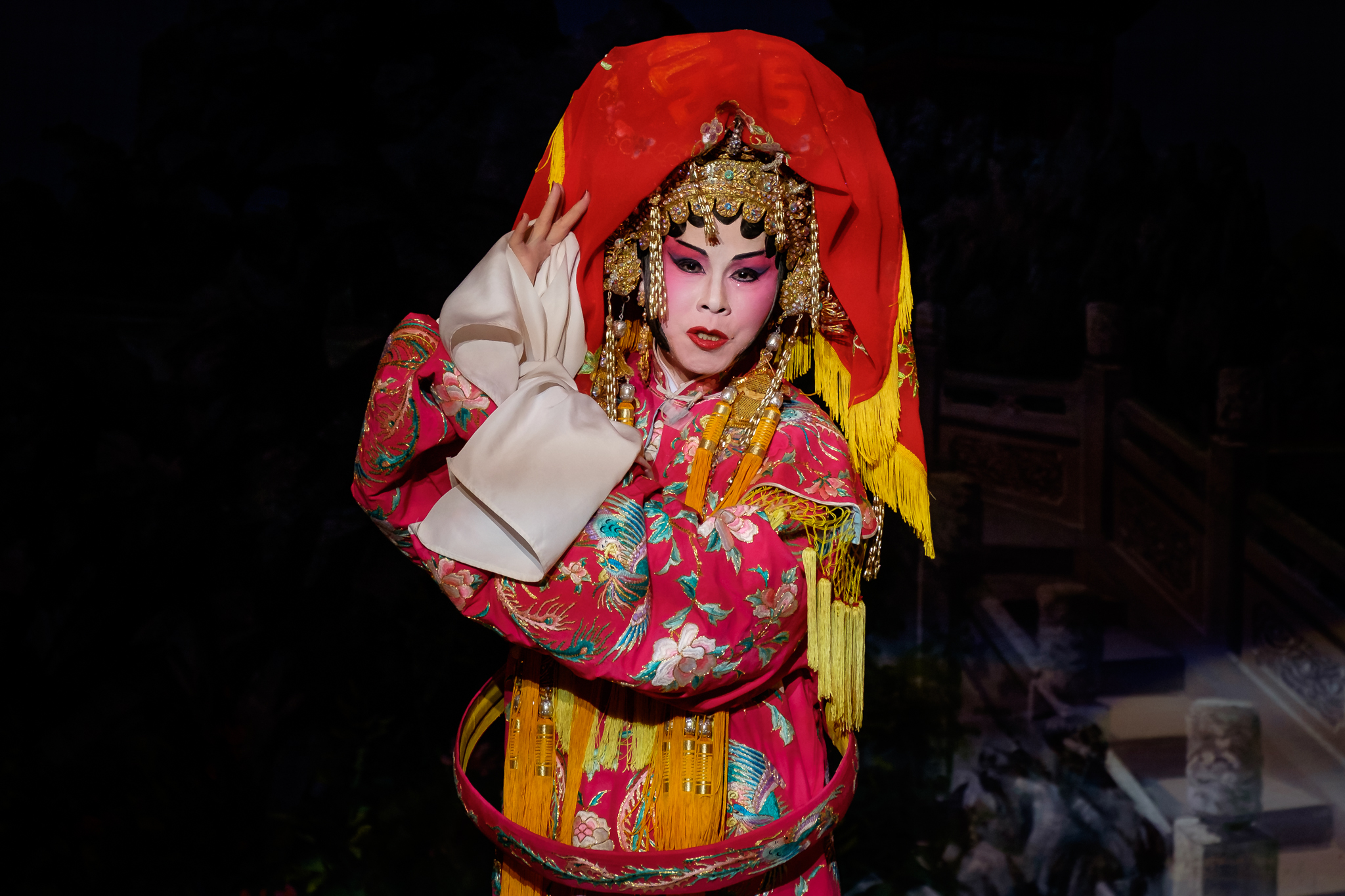Imperial costumes, striking make up, love and tragedy—what more can you ask for when shooting a Cantonese opera? I had the fortunate opportunity to photograph all these elements coming together at a recent performance last month. This was my second time shooting a performance by the Vancouver Cantonese Opera, and this time it was for the well-known classic and favorite among Cantonese opera fans—Princess Cheung Ping (帝女花). The story is based on the life of the princess who lived during the end of the Ming Dynasty and tells her tale of love, turmoil, and tragedy.
Photographing a Cantonese opera is a feast for the eyes; it’s not hard to find a beautiful moment to capture. Instead, the danger is being too trigger-happy. I admit I can be like a junkie who can’t get enough. But, what I learned from my first shoot was to be more thoughtful before pressing the button. I considered not just the frame’s composition, but whether it was different from what I had shot before. Did I have the right settings or the right lens for the shot? How could I see the subject in a more interesting way?
Of course, the advantage of a second chance is having the experience of the first. I had another opportunity at improving what I had done before, and I wasn’t going to leave it up to chance.
How I Prepared For The Shoot
First, I reviewed my notes from the previous shoot. I had made notes on things to avoid and do instead. It was extremely helpful to review those notes since it had been almost a year ago when I photographed my first opera. Second, I attended the rehearsal the night before the performance. This gave me a good idea of the key moments in the opera and the movement of the characters on stage. Consequently, I thought about the lenses I would need to capture certain scenes. Since some scenes transitioned quickly and involved many performers on stage at once, I decided a second camera with a wide-angle lens would come in handy.
Luckily, I was sitting next to the script supervisor during the rehearsal. Although I grew up with Cantonese-speaking parents, my Cantonese is limited and rusty, especially since I’ve been focused on learning Mandarin. During short breaks, I would ask the script supervisor what was happening. Her explanations made more sense than my comical interpretations of what was occurring. At one point, I thought a tornado had landed in their midst, but actually the Ming emperor and his court were hearing the approach of the enemy’s drums. By understanding the story, I could identify key moments in the opera and know when to expect them.
Lessons Learned From the First Shoot
Since I didn’t see the rehearsal before shooting my first Cantonese opera, one challenge I had was not knowing what to expect. Sometimes, I would miss an entrance of a key character on stage because I was too focused staring down the barrel of my lens. That was another lesson I learned: Be more aware of everything happening on stage. This may seem like common sense, but when shooting with a telephoto lens, it’s easy to have tunnel vision. Previously, I also relied too much on giving control over to the camera. By knowing what would happen next, I was better prepared to make quick adjustments to the settings, such as switching from single frame to high speed shooting for fast movement.
Before the Performance
The performance was scheduled for 7pm with a duration of about four hours, so I made sure to get plenty of rest the night before. In the morning, I charged all my batteries and packed my camera bag with the gear I would need. I also cleared all my memory cards and made sure I had enough memory to cover the performance.
The performers need about two to three hours to do their hair and make up. So, I arrived about two and a half hours before the performance to capture the preparation process. Each performer undergoes a magical transformation that’s fascinating to watch. Once remade, their characters become alive, and their prior selves are no longer recognizable. For me, it’s just as enjoyable to capture the transformation as it is the performance. I chose a 35mm lens to shoot this process because I like the sharpness and nice bokeh the lens produces.
During the Performance
Right before the start of the performance, I switched to a 55–200mm lens on my Fujifilm XT-1 camera. This allowed me to zoom in tight, sitting about 30–40 feet away from the stage. For wide-angle shots I wanted to capture, I also had my Nikon D300s with a 35mm lens attached. The 20mm lens I had tried seemed to be too wide. But, with the 35mm lens, it covered the entire stage just perfectly from where I sat.
The performance comprised several acts and between each one was a short break. During these times, I would review the photos on my camera to make sure everything looked ok and decide if I needed to change the settings or the way I was shooting.
By the end of the night, I had taken about 1,500 photos. Although they weren’t all good, they turned out better than the photos from my first shoot. It was clear the added preparation paid off. I’ll share some of my favorite images from the shoot below.
The performers and staff of the Vancouver Cantonese Opera did a fantastic job of putting together a great show. I’m grateful to Rosa Cheng, the Artistic Director, and her team for being so gracious with providing behind-the-scenes access and a good view of the performance. The amount of effort the performers spend to memorize a four-hour opera is incredible. It’s such a privilege to capture their passion and enthusiasm for Cantonese opera and preserving such a culturally rich art form.
Hover over image and click arrows to view more.


